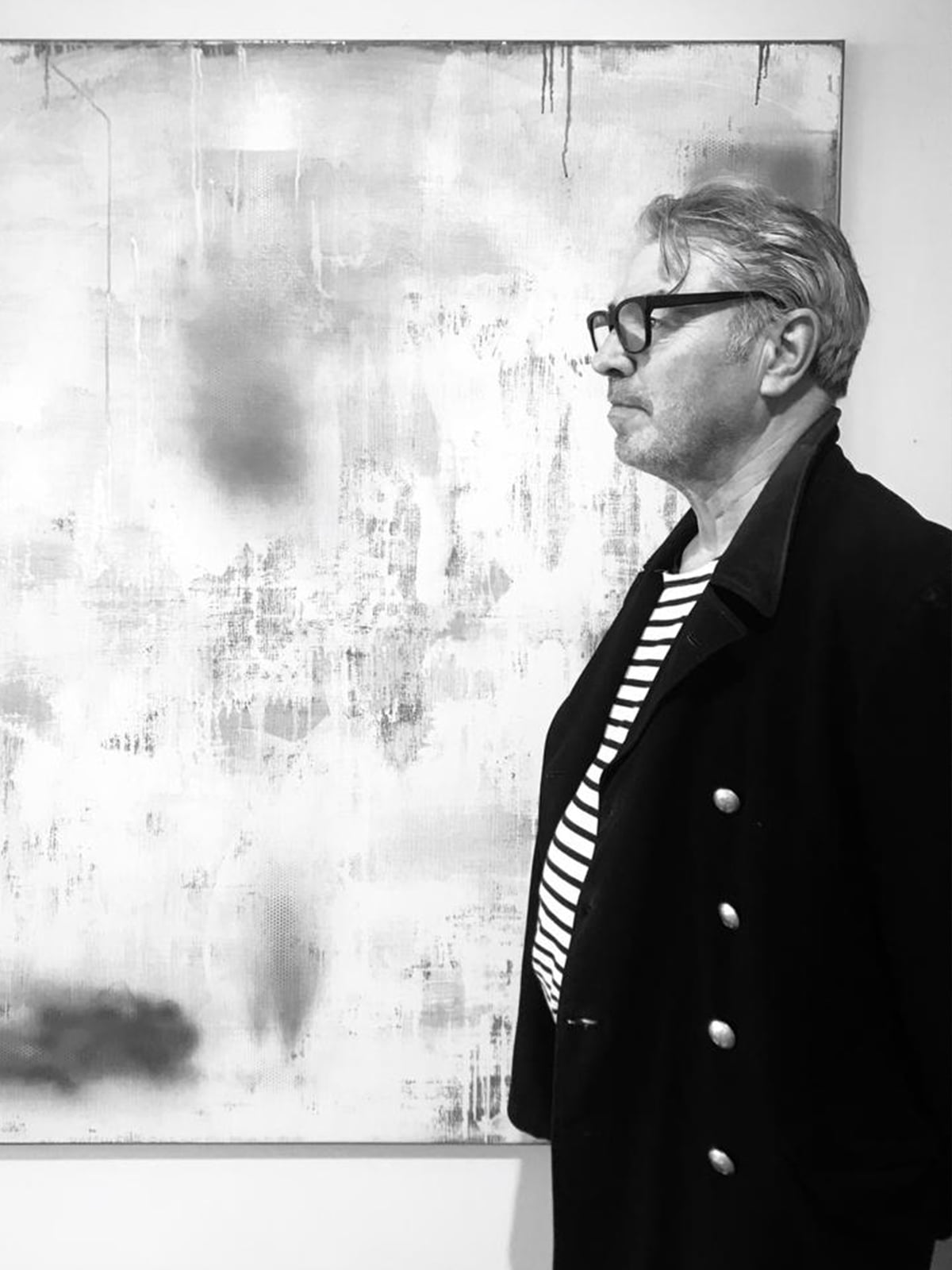
Dirk Vander Eecken creates abstract paintings with the aid of grids. These function as a sort of ‘templates’, in the sense that they steer the acrylics on the canvas, but they also create a distance between the painter and the canvas. Indeed, as the artist uses spray paint, there is no contact between him and his work.
In 2008, Vander Eecken was the first in Flanders to obtain a PhD in the arts at the University of Antwerp. He worked together with nano-scientists of the EMAT group, who use electron microscopes to study materials, linking images of their research to his own praxis. Zoomed, gridded images are always important in Vander Eecken’s oeuvre.
The title of this new exhibition, Dislocations, affords fundamental insights in Vander Eecken’s praxis, and not just with regard to his recent works. In first instance, the term dislocation refers to dis-locating something, i.e. removing it from its logical or evident place. However, the term has also a scientific meaning. Professor Staf Van Tendeloo, Vander Eecken’s PhD tutor: ‘A dislocation is a material defect that is responsible for the strength (or frailty) of materials. Around the dislocation, there’s an area of tension because near it, the atoms deviate from their normal position.’
The coincidences and imperfections Vander Eecken allows to enter his work—which are often the result of the physical distance between the work and its maker—are like dislocations. Precisely these details result in a certain tension, an irregularity, a question mark. The grid structure is certainly not a strict pattern. Here and there, stains, drips, disturbances sneak into the works. It’s these elements that disrupt the surface of the canvas, catching our attention and forcing us to keep looking.
In his book Le détail (1992), Daniel Arasse defines dislocations as resulting from details in works of art, more in particular from what he refers to as dettaglio. Unlike specific, very small details in figurative representations that are essential to lend life to the subjects depicted, the term dettaglio refers to small, unique details that are typical of the individual artist and the surface of the specific work. ‘The configuration of the detail depends on de viewpoint of the “detailer”, and in the intimate relationship that establishes itself with the work, the detail as such eludes all forms of control, defies all norms.’ For Arasse, such details bring about a fundamental dislocation of the work because they constitute a paradox. On the one hand, they hold great appeal and suck the gaze of the viewer towards them. On the other hand, they disrupt the traditional viewer-canvas relationship. The canvas becomes less legible and strange effects result. Arasse furthermore emphasizes the fact that in order to achieve this sort of details, the maker must relinquish control over the work.
Distance and dislocations… Distance and alienation. Because of his own distance with regard to the work—which doesn’t diminish the emotional accessibility of the resulting canvas—and by admitting disruptive details, Vander Eecken introduces a certain alienation in his work. It’s a game of attraction with the viewer, who on the one hand may lose himself or herself in the work, while at the same time is compelled to ask questions regarding the image.
Vander Eecken’s titles, such as Paysage or Red Fields, give away a certain figurative intent. Often a landscape can be discerned behind the abstraction—a memory the artist transfers to the canvas in an abstract manner. In a letter to the artist in 2014, Philippe Van Cauteren wrote: ‘Your work represents a non- knowing and non-signifying within the conventional agenda of looking, and opens up the perception in such a way that the viewer is compelled to dismantle every pictorial prejudice.’ In his distance with regard to the work, in the absence of a controlling ‘hand of the artist’, Vander Eecken is a non-painter. What we see, is a non-image, an essence that results from the disruption of the imagination and perception.

